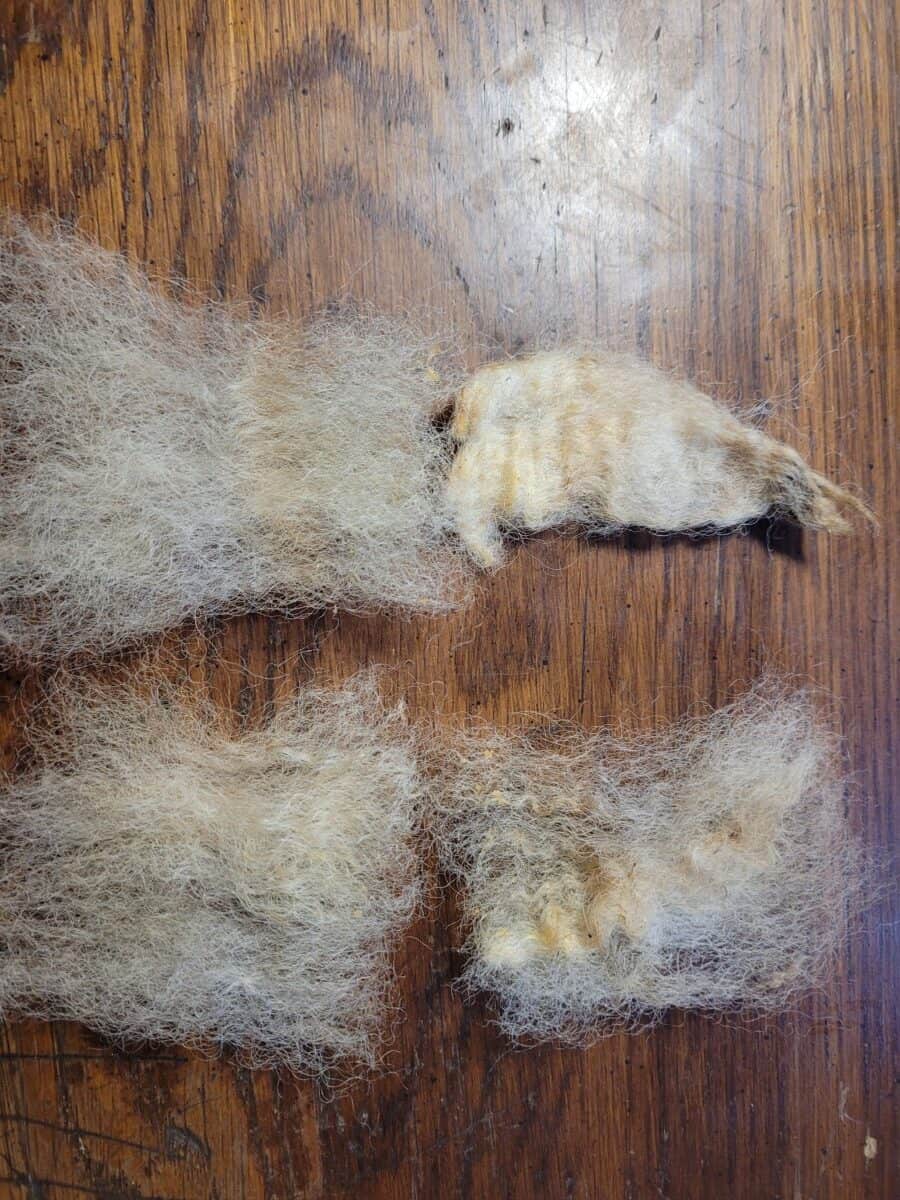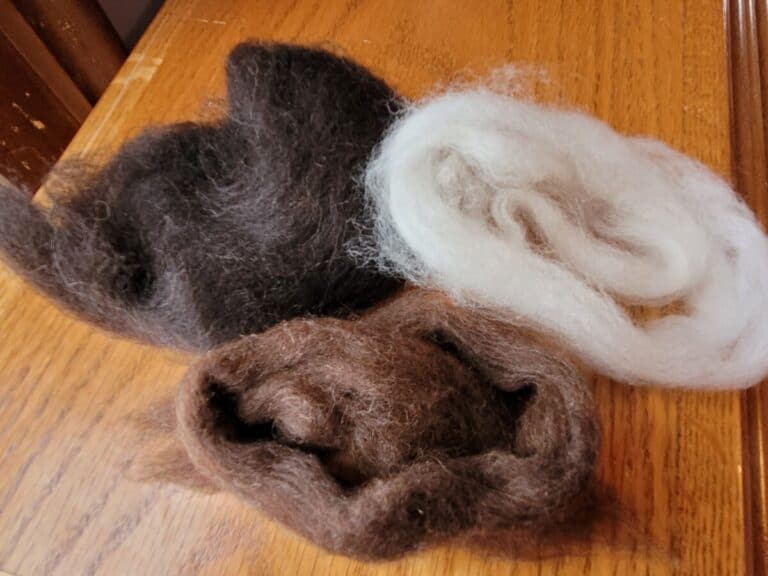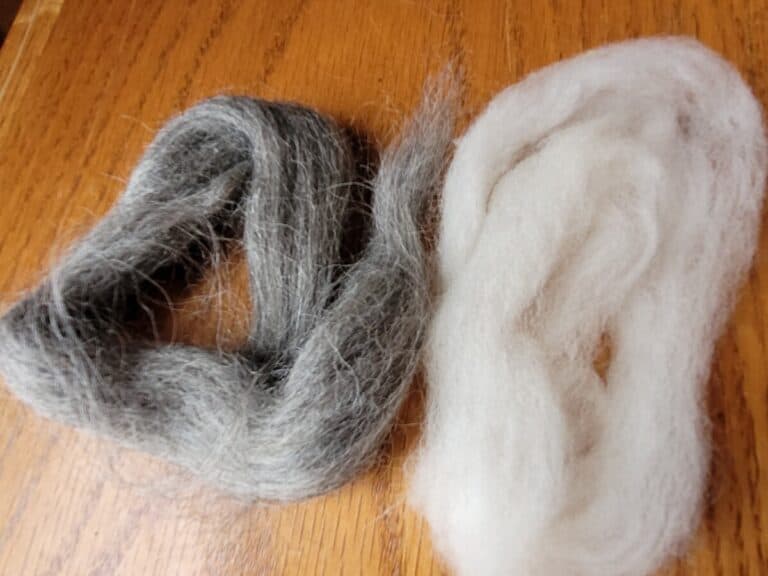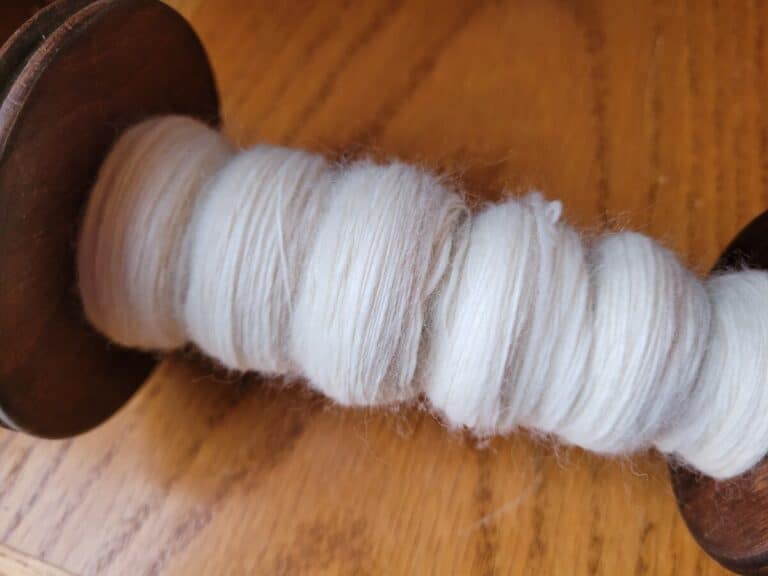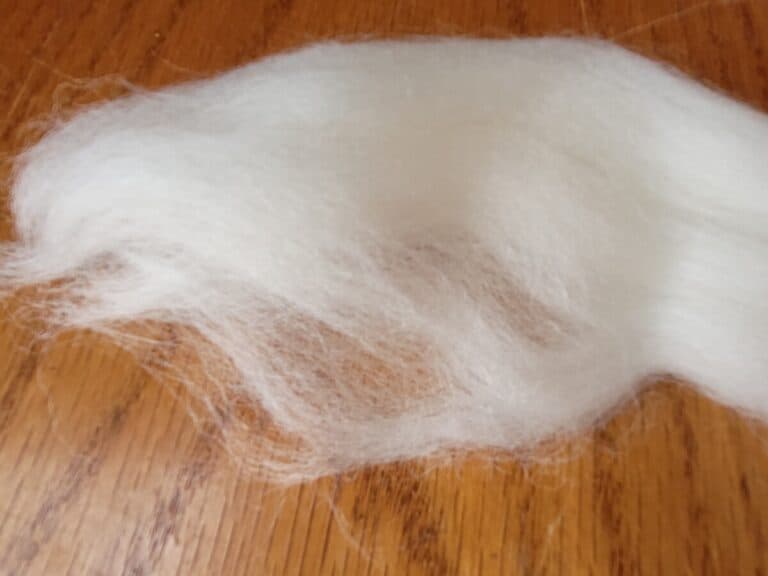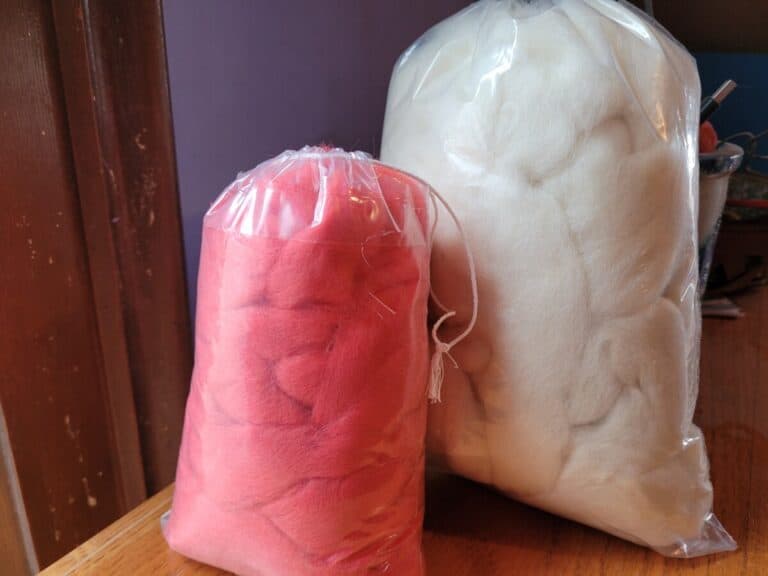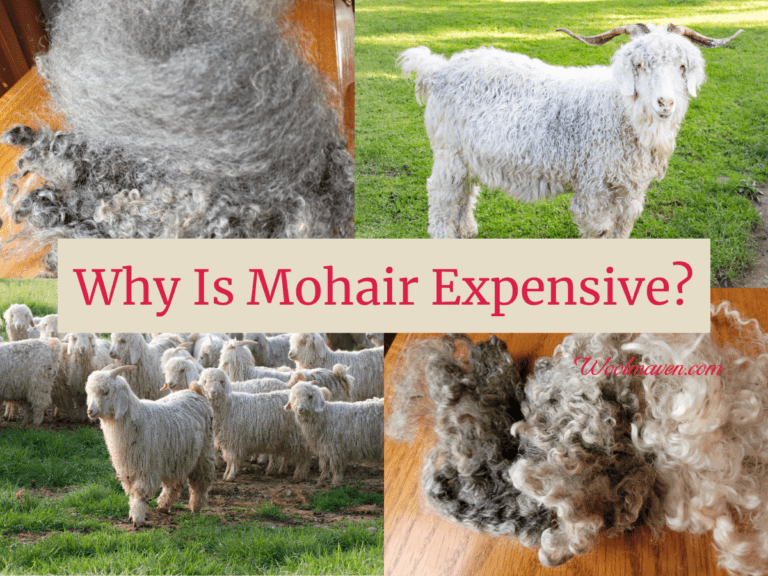What Is Staple Length In Wool & Why It Matters!
You’ve heard the term staple length tossed around, especially when you are looking into spinning fibers, and wondered what does that mean?
Why do folks who are using wool for spinning, weaving or other wool crafts care about this thing called staple?
Staple length is the length of the individual fiber of the wool. Staple length varies with the individual fiber animal and the breed of the fiber animal, time of year and health of the animal.
When we go over staple length, I’ll be referring to sheep.
This is for simplicity, not because they are the only fiber animal where staple length is important! Staple length is crucial for all fiber animals, not just sheep.
Is Merino Hard To Spin? goes over tips on working with this wonderfully versatile wool!
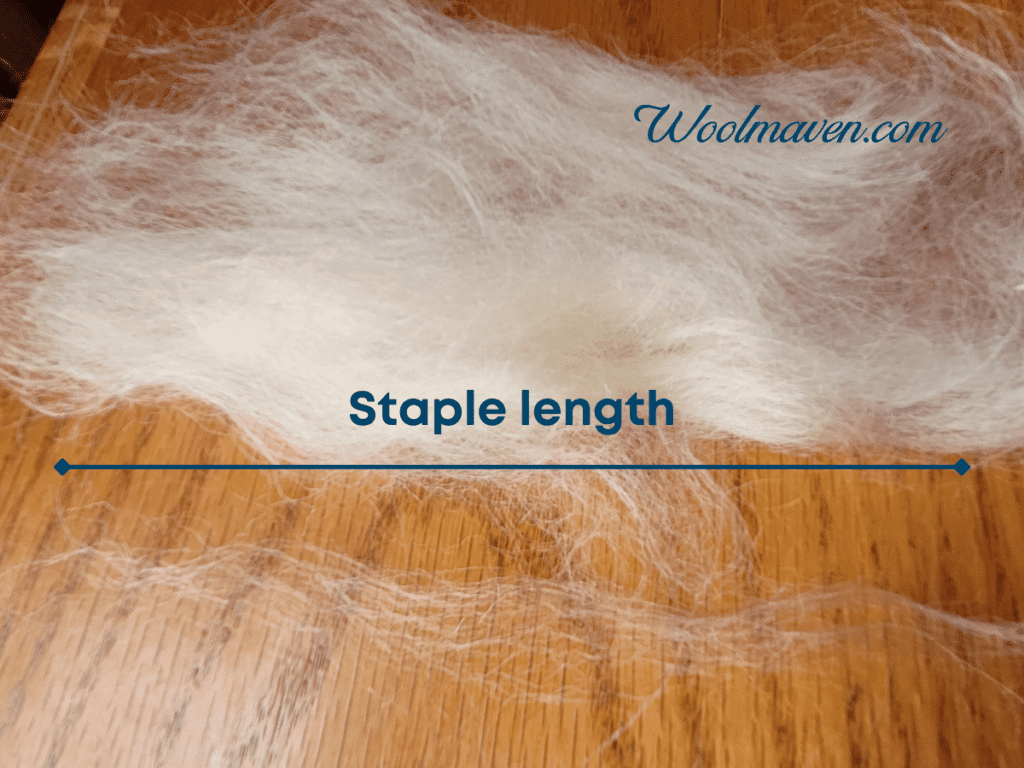
What is staple length of wool?
Staple length of wool is the length of each individual fiber that makes up the fleece of the fiber animal.
The staple length is an average of the length found on the prime wool sections of the fleece, meaning some fibers will be a bit longer or shorter, but the over all staple length is an average.
Staple length is measured by using the unstretched wool lock. This means that a wool that even if a wool is very kinky is measured as it sits, not pulled straight.
Should You Spin With Combed Top? gives you a few reasons why you would consider working with this fiber preparation.
Why is wool staple length important?
Staple length is important because wools with longer staple lengths but the same microns as another fleece of the same breed are generally more valuable.
Longer stapled wools have more versatility than shorter stapled wools of the same diameter. They are also harder to find so they are worth more.
As far as handspinning goes, staple length will be one of the things you look at to determine how to prep the wool for spinning and how easy it is to actually use the wool for your spinning.
Generally speaking, shorter staple length wools are harder to spin, especially for beginners who are still figuring things out.
Overly long staple lengths will also be a challenge, the opposite challenge of short fibers, but still a challenge.
For the beginning spinner, we are looking for a nice middle ground staple length of 3-5 inches.
In my experience, 3-5 inches is a nice length that will be more forgiving than a shorter staple but not as awkward as the really long wools.
I can hear the rebuttals already, “long wools are easy to spin” or “fine wools spin like a dream”. Yes, all true once you have the basics down.
As a complete beginner, these wonderful wools are a harder than it needs to be place to start.
If you are new to handspinning, stick with the mediums: medium wool and medium staple length.
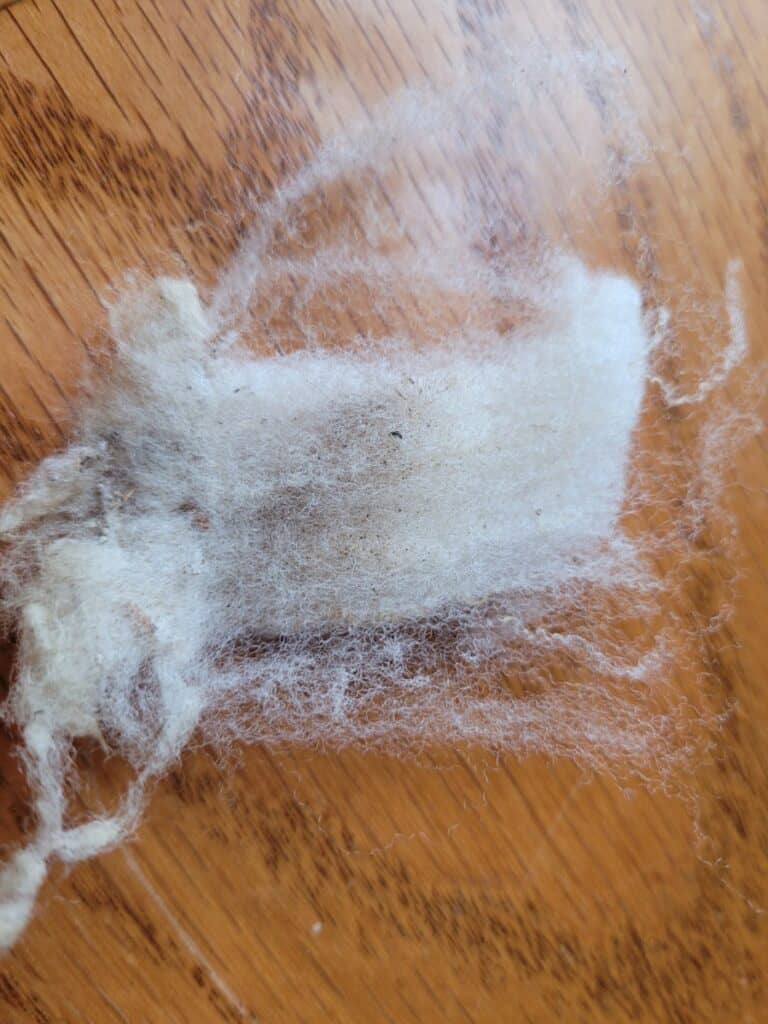
Choose staple length to match spinning or project
Here is where staple length can help you or hurt you, you need to match the staple length of the wool with your spinning style and with the final project you are making in mind.
For instance, if you are wanting to make a cozy knitted or crocheted hat, you’ll want a woolen type yarn that is a bit springy and has bounce back.
This way your hat will be warm, that’s the woolen yarn part, and your hat will be a snug fit on your head but keep it’s shape by pulling back together once you take it off, this is the springy or bounce back part.
This project would be great with a nice down wool, like Cheviot, which would have a shorter staple length and spin up into a springy yarn, ideal for hats.
Wools that would not be ideal here are something with a long staple length with a ton of luster, like Wensleydale. These really long wools are more for draping projects, like shawls and scarves.
Common uses for wool by staple length
| Wool | Staple length | Common uses |
| Merino | 2-5″ | next to skin wool |
| Corriedale | 3-6″ | outerwear, like hats |
| Cheviot | 4-5″ | springy yarn |
| Romney | 4-8″ | outerwear, like hats |
| Shetland | 2-10″ | varies with fleece |
| Southdown | 1.5-4″ | woolen spinning |
| Wensleydale | 7-12″ | weaving |
I just picked a few breeds off the top of my head to give you some examples of what you would pick for a spinning project.
Please keep in mind that all wools work wonderfully well for something, the trick is to match the something that the wool is great for to the something you are trying to do!
Using the list above, if I were to choose a wool based on project I would pick:
- New to spinning, first wool: go with a mid range staple length Corriedale or a Romney. These wools are both beginner friendly and will have a staple length that is more forgiving than the short stapled wools, yet not so long that you have more things to think about while trying to get started.
- Making a hat that will hold shape well: Cheviot, longer Southdown, Corriedale, or Romney. The most spring here will be the Cheviot, the most insulating will be the Southdown.
- Make yarn specifically for weaving: Wensleydale is the clear winner. Of course you can weave with the others but Wensleydale is the weaving specialist in this group.
- Easy to work with, versatile fleece: go with Corriedale, Romney and mid range staple length Shetland wools.
- Super soft yarn for next to skin projects: definitely choose Merino. Some of the finer Southdown fleeces will be nice as will some of the finer Shetland fleeces, but Merino is the clear winner for this project.
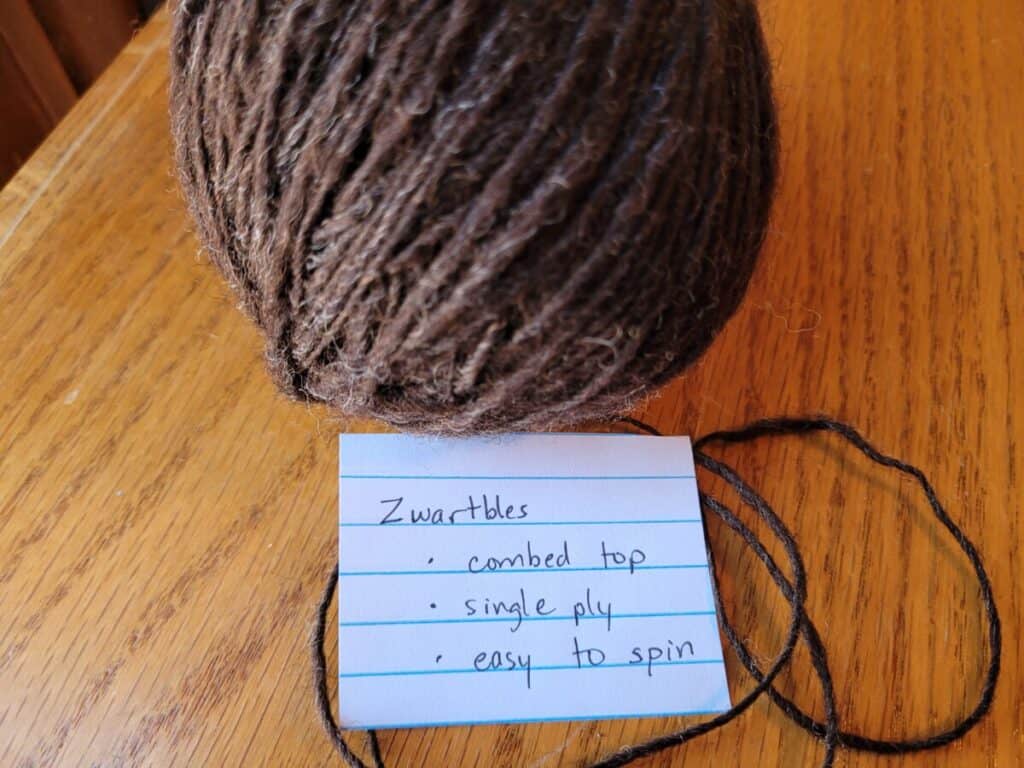
You can experiment with wools of different staple lengths
You can experiment with wools of varying staple lengths and see what you like or just explore your options and see if a non traditional use for a wool actually works well for you.
Once you get some experience spinning, start to branch out and see if moving to a shorter or longer staple length is actually more of what you are looking for.
For instance, a really short stapled down wool might be the best roving you have ever used or it might drive you nuts with it always getting away from you. You never know until you try.
Another example, when you are first getting started, medium wools of medium staple lengths are the way to go, but what about when you want to go with a really soft yarn?
Now since you have plenty of practice, you can go with a bit shorter of a staple length and branch out into woolen spinning and fine wools, nice!
Try fiber blends to get an easy to spin yarn with more fiber choices
Additionally, there are some great blends out there that combine a shorter stapled wool or a harder for beginners to spin wool with a longer stapled or easier to spin wool, so you get the best of both worlds.
For instance, if you are in love with the idea of using angora (that’s rabbit, the goat fiber is mohair), but know that it is probably too slippery for you to handle right now (it’s definitely slippery!) why not work up to it with an angora blend?
The blend of angora and sheep’s wool would get you started toward angora yet still give you a fiber that has a staple length that is long enough for you to work with. That’s a win!
Sheep 201 has a nice article on the marketing aspects of wool, staple length being one of the determiners of price, along with microns.

